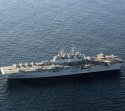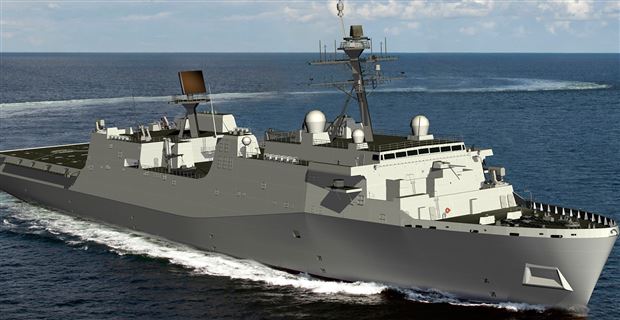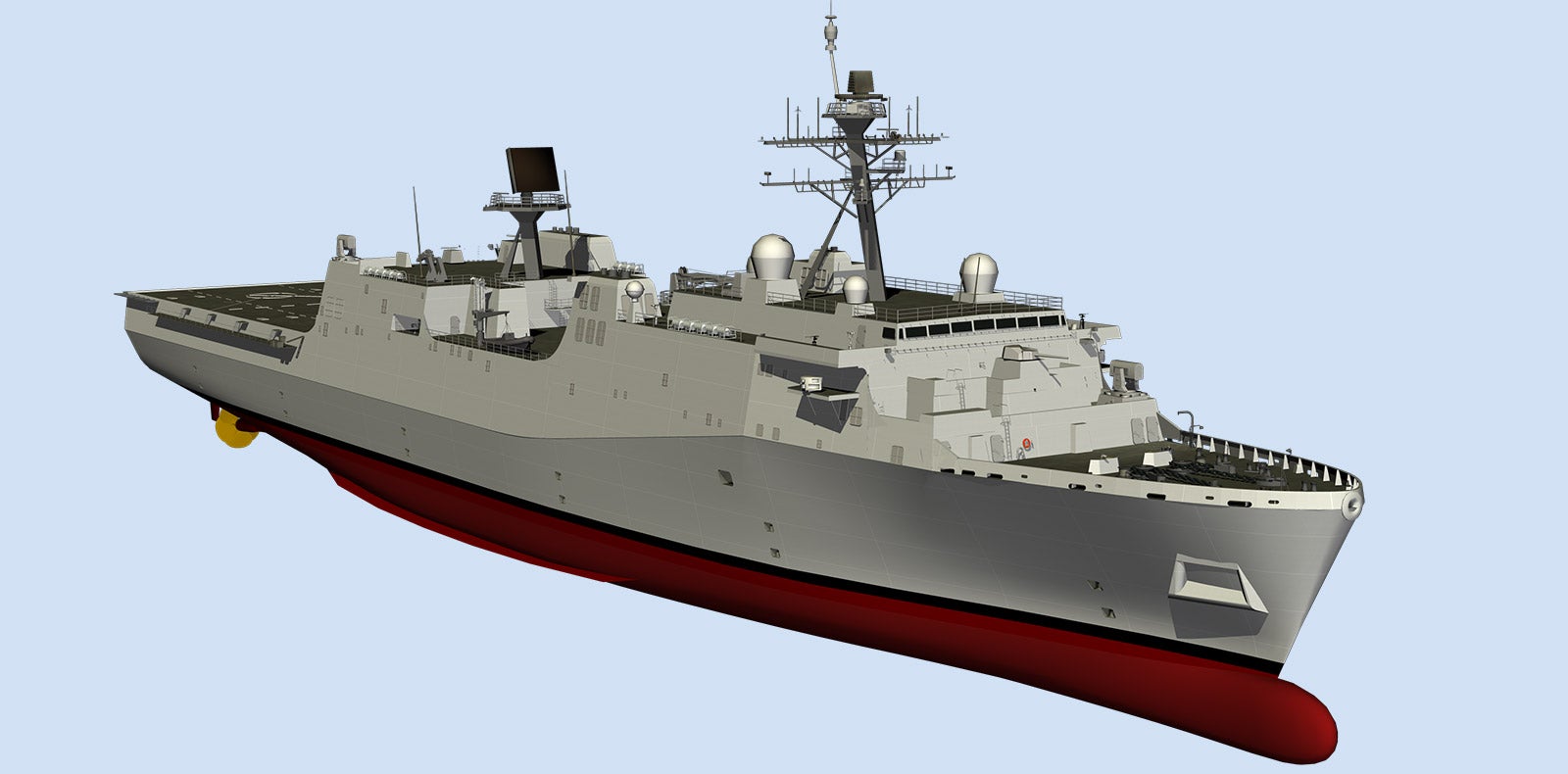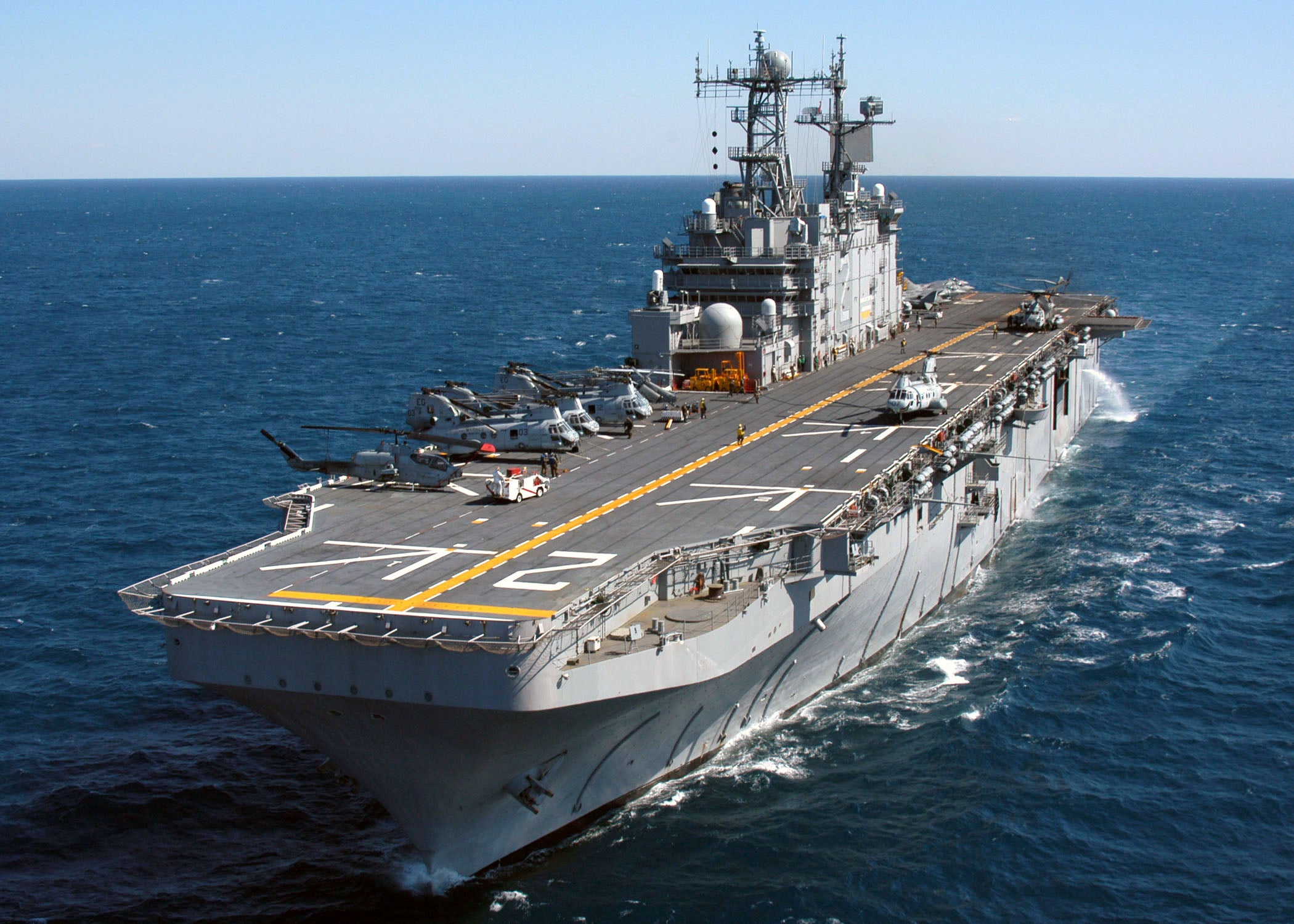Special Analysis: Navy Maps the Future of Amphibious Warfare
As a new Amphibious Transport Dock completes Builders Trials and moves closer to operational service in 2018, the Navy and Marine Corps continue to adapt planning,
As a new Amphibious Transport Dock completes Builders Trials and moves closer to operational service in 2018, the Navy and Marine Corps continue to adapt planning, technological focus and concepts of operation for amphibious combat and Amphibious Ready Groups in the future.
By Kris Osborn
The USS Portland (LPD 27) has completed a series of at-sea tests including full power runs, self-defense detect-to-engage exercises, evaluations of key combat and communications systems, rapid ballast/de-ballast operations, steering checks, and anchor handling demonstrations.
The USS Portland is part of a broader Navy and Marine Corps strategy to adjusts amphibs for the future. The Navy is building a new, multi-mission amphibious assault ship designed to function in a modern threat environment, conduct a wider range of missions than the ship it is replacing, and help the service increase the lagging number of amphibs in the force, senior officials said.
While LPD 27 is the eleventh LPD 17 San Antonio Amphibious Transport Dock to join the fleet, the service seeks to multiply capability by engineering a new ship called the LX(R) - loosely based on an LPD 17 hull - with expanded technologies.
The Navy plans to build at least 11 new LX(R) ships, with the first one slated to deliver by 2026, service developers said.
In September of last year,
secured a $19.1 million contract modification to accelerate design work on the US Navy‘s LX(R) amphibious ship replacement program.
The Navy hopes to add much greater numbers of amphibious assault ships to the fleet while simultaneously adjusting to a modern threat landscape which will require more dis-aggregated operations - and require single Amphibious Ready Groups (ARG) to perform a much wider range of missions. Modern near peer adversaries increasingly posses long range sensors and precision-guided munitions, a phenomenon which will require much more operational diversity from ARGs.
New Navy LXR - Future Amphib Strategy
The Navy plans new LX(R) amphibs to replace its current fleet of Dock Landing Ships, or LSD 41s, which have functioned for years as a support ship in an ARG. This strategic move to replace Dock Landing Ships with an LPD 17-like hull seems to speak to a Navy effort to expand amphibious capability to adjust to new threats and help compensate for a continued Navy amphibious assault ship deficit.
The Navy used to be able to deploy up to five ARGs at one time, however the fleet is no longer the size it used to be in the 1980s and the service is working on a strategy to get by with fewer ARGs and as fewer amphibs overall. As a result, the Navy needs more ships that have the technological ability to operate independently of an ARG if need be.
The modern threat environment contains a wider range of contingencies to include counterterrorism operations, counter-piracy, humanitarian missions, disaster response and, of course, full-scale amphibious combat operations against near-peer adversaries. This requires that the three ships in an ARG have an ability to disperse when necessary and operate independently. The Navy and Marine Corps increasingly explains that modern missions require more split or dis-aggregated operations.
A lead Amphibious Assault Ship, a Dock Landing Ship, or LSD, and the San Antonio-class LPD 17 amphibious transport dock are both integral to an Amphibious Ready Group, which typically draws upon a handful of platforms to ensure expeditionary warfighting technology. The ARG is tasked with transporting at least 2,200 Marines and their equipment, including what’s called a Marine Expeditionary Unit, or MEU.
The 684-foot long LPD 17s can hit speeds of 22 knots and carry four CH-46 Sea Knights or two MV-22 Osprey aircraft. The LSD, or Dock Landing Ship, also travels around 20 knots however it is only 609-feet long and not equipped to house aircraft.
Both the LPD 17 and the LSDs have well-decks for amphibious operations along with the ability to launch Landing Craft Air Cushions, or LCACs. However, the LPD17 weighs close to 25,000 tons and the LSD is only 16,000 tons.
The 1980’s-era LSD dock landing ships consist of eight Whidbey Island-class 609-foot long ships. The 15,000-ton ships, configured largely to house and transport four LCACs, are nearing the end of their service life.
While the mission of the existing Dock Landing Ship (LSD) is primarily, among other things, to support an ability to launch Landing Craft Air Cushions, or LCACs, for amphibious operations, the new LX(R) ship will have an expanded mission to include more independent missions. LCACs are ship to shore connector vehicles able to transport Marines and equipment from ship-to-shore beyond the horizon. LCACs can even carry M1 Abrams tanks over the ocean.
An Amphibious Transport Dock, or LPD, is designed to operate with greater autonomy from an ARG and potentially conduct independent operations as needed. An LSD is able to operate four LCACs and the more autonomous LPD 17 can launch two LCACs.
Developers explain that the LX(R) ship will have a much wider mission set than the fleet of LSD ships it is replacing.
As a result of this wider mission requirement for the LX(R), the ship is being engineered with greater aviation and command and control technologies that the LSD 41 ships it is replacing.
Additional command and control capabilities, such as communications technologies, will allow the ship to reach back to the joint force headquarters they are working for, stay in with the parent ship and control the landing force, Navy and Marine Corps developers added.
Having more amphibs engineered and constructed for independent operations is seen as a strategic advantage in light of the Pacific rebalance and the geographical expanse of the region. The widely dispersed territories in the region may require a greater degree of independent amphibious operations where single amphibs operate separately from a larger ARG.
Corps officials explain that the greater use of amphibious assault ships is likely as the Marine Corps continues to shift toward more sea-based operations from its land-based focus during the wars in Iraq and Afghanistan.
At the same time, Navy and Marine Corps leaders are quick to acknowledge that there is a massive shortfall of Amphibious Assault Ships across the two services. In recent years, senior service leaders have said that if each requirement or request for amphibs from Combatant Commanders worldwide were met, the Navy would need 50 amphibs.
The Navy currently operates only roughly 30 amphibs and plans to reach 38 by the late 2020s.





